Fun Facts About Painted Lady Butterflies: Discover Wonders!
Painted Lady butterflies boast vibrant wing patterns aiding in thermoregulation and predator avoidance. They migrate up to 9,000 miles annually, utilizing wind currents and a multi-generational relay approach.
Undergo complete metamorphosis from egg to adult in 20-22 days, with adults living from two weeks to several months. Diet consists of nectar from thistles, asters, buddleias, and larvae feeding on thistles and mallows.
Found globally except Antarctica, they’re adaptable and thrive in diverse habitats. Defense mechanisms include rapid flight and toxic chemicals, showcasing their evolutionary resilience.
Further exploration will reveal intricate details of their adaptability and survival strategies.
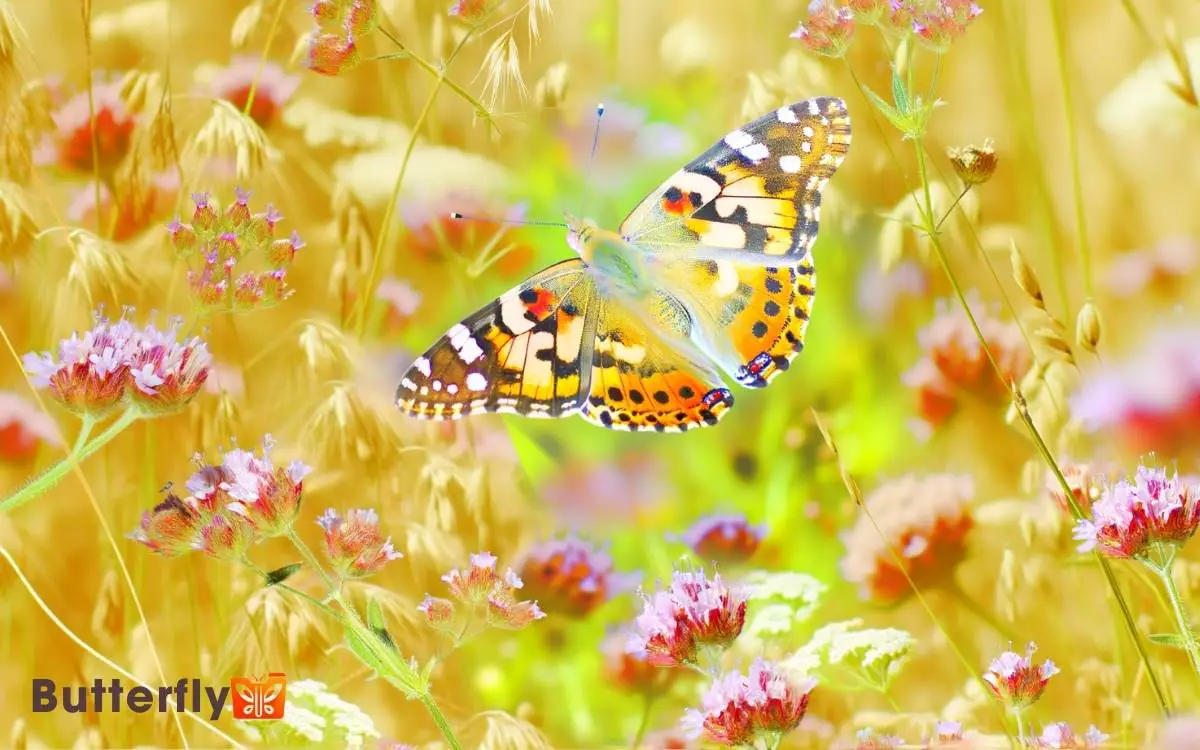
Key Takeaways
Vibrant Wing Patterns
The painted lady butterfly exhibits intricate wing patterns characterized by a combination of orange, black, and white spots that serve both camouflage and signaling functions.
These patterns aren’t random; they follow a specific arrangement that has been studied extensively.
The orange areas primarily aid in thermoregulation by absorbing heat, while the black spots provide disruptive coloration that helps in predator avoidance. White spots function as visual signals during mating displays.
Observations indicate that under ultraviolet light, additional hidden patterns become visible, enhancing their signaling efficiency.
Data from spectrophotometry reveal that their wings reflect light at specific wavelengths, optimizing both camouflage and communication.
This multifaceted approach to survival demonstrates the complexity of their evolutionary adaptations.
Global Migrators
Moving across continents, painted lady butterflies undertake one of the longest migrations of any insect, spanning up to 9,000 miles in a single year.
These butterflies travel from Africa to Europe, traversing various climates and landscapes. Their migration patterns are primarily driven by seasonal changes and food availability.
Scientists have observed that painted ladies can travel at altitudes up to 3,000 feet, utilizing wind currents to conserve energy.
GPS tracking data confirms that they can cover up to 100 miles per day. Remarkably, they don’t follow a direct path but instead take a multi-generational relay approach, where successive generations continue the journey.
This complex migration showcases their adaptability and resilience in responding to ecological cues.
Lifespan and Stages
Painted Lady butterflies undergo a complete metamorphosis. They start as eggs laid on host plants. These eggs hatch into caterpillars, which then pupate and form a chrysalis.
After approximately 10 days, the adult butterfly emerges. Their total lifespan ranges from 2 weeks to several months, depending on environmental conditions.
Egg to Caterpillar
Every painted lady butterfly begins its life as a tiny, pale green egg, meticulously laid on the underside of a host plant’s leaf. This egg, approximately 1 millimeter in diameter, hatches within 3 to 5 days.
Emerging as a small caterpillar, or larva, it immediately begins consuming the leaf. The larva undergoes five instars, or stages of growth, each marked by a molting process where it sheds its exoskeleton.
During this period, the caterpillar grows from around 2 millimeters to nearly 25 millimeters in length.
It exhibits voracious feeding behavior, increasing its biomass substantially. This larval stage, which spans about 10 to 12 days, is critical for accumulating the necessary energy reserves for the subsequent transformation.
Pupation and Chrysalis
Upon completing its final instar, the caterpillar seeks a secure location to initiate the pupation process, where it will form a chrysalis and undergo metamorphosis over the next 7 to 10 days. This chrysalis stage is critical for the transformation from larva to adult butterfly.
During pupation:
- The caterpillar attaches itself to a surface using silk.
- It sheds its final larval skin to reveal the chrysalis beneath.
- The chrysalis hardens and provides protection.
- Inside, the caterpillar’s body breaks down into a nutrient-rich soup.
- Cellular differentiation occurs, forming adult structures like wings.
Temperature and humidity notably influence the duration of this stage. Observations indicate that lower temperatures can extend the pupation period, while favorable conditions expedite it, ensuring the butterfly’s successful emergence.
Adult Butterfly Life
Emerging from the hardened chrysalis, the adult butterfly begins a life stage characterized by flight, feeding, and reproduction, typically lasting between two to four weeks.
Painted Lady butterflies exhibit remarkable dispersal abilities, often traveling long distances to find suitable habitats. During this period, they feed primarily on nectar from a variety of flowering plants, utilizing their proboscis for efficient nectar extraction.
Their reproductive phase involves intricate courtship behaviors and the laying of eggs on host plants, ensuring the next generation’s survival.
Data indicates that environmental factors, such as temperature and food availability, greatly influence their lifespan.
Observations show that warmer climates and abundant resources can extend their life expectancy, allowing for prolonged activity and reproductive success.
Diet and Feeding
Painted Lady butterflies mainly consume nectar from a variety of flowering plants, with a preference for thistle, aster, and cosmos.
Their larvae chiefly feed on host plants such as thistles, mallows, and hollyhocks, demonstrating a highly specific dietary requirement.
Studies show that the availability of these food sources directly affects their survival and population dynamics.
Nectar Preferences
The Painted Lady butterfly primarily feeds on nectar from a diverse range of flowering plants, including thistles, asters, and buddleias, optimizing its nutritional intake for energy and reproduction.
Studies indicate that these butterflies exhibit selective feeding behavior based on nectar availability and sugar concentration.
They prefer flowers that offer high-energy nectar sources to sustain their migratory and reproductive activities.
Observations have revealed key preferences:
- Thistles: Rich in nectar, providing essential sugars.
- Asters: Abundant and accessible throughout their range.
- Buddleias: Known for long-lasting blooms, offering consistent nectar.
- Sunflowers: Provide ample nectar and are widespread.
- Lavender: High in nectar, attracting many pollinators.
The Painted Lady’s feeding habits reflect an adaptive strategy, ensuring survival across diverse habitats.
Larval Food Sources
Larvae of the Painted Lady butterfly mainly feed on host plants such as thistles, mallows, and hollyhocks, which provide the necessary nutrients for their growth and development. These plants are rich in essential amino acids, critical for larval protein synthesis.
Observations reveal that larvae exhibit a preference for fresh leaves, as they contain higher moisture and nutrient levels.
Data indicate that larvae can consume up to 200mg of leaf tissue daily during peak growth phases. This high intake supports rapid development through five instar stages.
Additionally, the chemical composition of these host plants includes secondary metabolites that may deter predators.
Understanding these dietary preferences is crucial for conservation efforts and habitat restoration aimed at supporting Painted Lady populations.
Habitat and Range
Found on every continent except Antarctica, the painted lady butterfly exhibits one of the most extensive habitat ranges among butterflies, thriving in diverse environments from meadows to desert edges.
This adaptability allows them to colonize a variety of ecological niches. Their range is supported by their ability to migrate long distances, sometimes covering thousands of miles.
Key habitats include:
- Meadows and Grasslands: Rich in nectar sources and larval food plants.
- Desert Edges: Where they exploit sparse vegetation.
- Urban Areas: Utilizing gardens and parks.
- Coastal Areas: Benefiting from mild climates and abundant plant life.
- Mountains: Found at elevations up to 4,000 meters, adapting to cooler temperatures.
These data-driven observations underscore their remarkable adaptability and resilience in various climatic and geographical conditions.
Predators and Defense
Painted lady butterflies employ a range of defense mechanisms to evade predators, including rapid flight, camouflage, and toxic chemicals. Their erratic flight patterns make it difficult for predators like birds, spiders, and wasps to capture them.
The intricate patterns on their wings provide effective camouflage among flowers and foliage, reducing visibility to potential threats.
Additionally, larvae sequester toxic compounds from host plants, rendering them distasteful to predators. Studies show that these toxins, primarily composed of sesquiterpene lactones, deter predation.
Research indicates that painted lady butterflies have a survival rate increase of approximately 20% when these defense strategies are employed.
These multifaceted defenses enable painted ladies to navigate their environments with a higher probability of avoiding predation.
Breeding and Reproduction
While their defense mechanisms guarantee survival, painted lady butterflies also exhibit fascinating breeding and reproductive behaviors that contribute to their widespread distribution.
The female lays eggs on host plants, securing larvae have immediate access to food upon hatching. Eggs typically hatch within 3-5 days, depending on environmental conditions.
The larvae, or caterpillars, undergo five instar stages before pupating.
- Egg-laying: Females lay up to 500 eggs, usually on host plants like thistles and mallows.
- Incubation period: Eggs take 3-5 days to hatch.
- Larval stages: Caterpillars pass through five instar stages.
- Pupation: Pupation lasts about 10 days.
- Reproductive cycle: The entire cycle, from egg to adult, spans around 4 weeks.
These behaviors secure rapid population growth and adaptability to various environments.
Scientific Research
Numerous studies have focused on the migratory patterns, genetic diversity, and ecological impact of painted lady butterflies, providing valuable insights into their adaptability and survival strategies.
- Researchers have tracked their extensive migrations using satellite telemetry, revealing journeys spanning thousands of miles.
- Genetic analyses indicate high variability within populations, suggesting robust adaptability to diverse environments.
- Ecological studies have shown that painted ladies play essential roles as pollinators in various ecosystems.
- Data from these studies highlight their ability to thrive in different climatic conditions and their significant contribution to biodiversity.
These findings not only enhance our understanding of painted lady butterflies but also underscore their importance in maintaining ecological balance.
Conclusion
In sum, painted lady butterflies captivate with their vibrant wing patterns and astonishing migratory feats. From egg to adult, their lifecycle is a testament to nature’s intricate design. These butterflies embark on remarkable journeys, traveling thousands of miles across continents in search of suitable climates. Their adaptability allows them to thrive in diverse habitats, from meadows to urban gardens. Like butterflies similar to painted lady, they play a crucial role in pollination, supporting ecosystems worldwide.
Their varied diet and adaptive habitats highlight their survival prowess, while predators and defense mechanisms showcase evolutionary ingenuity.
Breeding behaviors and scientific studies unravel the mysteries of their existence. This mosaic of data underscores the painted lady’s role in our ecosystem, a delicate dance of beauty and resilience.

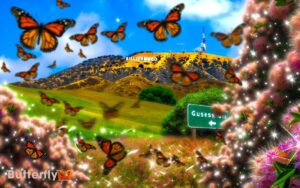
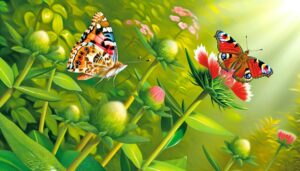
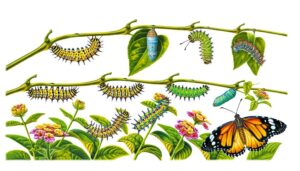
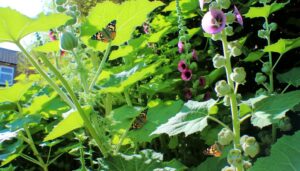
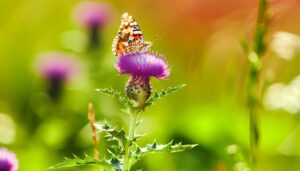
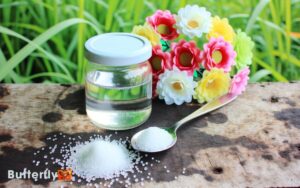
I don’t think the title of your article matches the content lol. Just kidding, mainly because I had some doubts after reading the article. https://accounts.binance.com/lv/register-person?ref=B4EPR6J0
Your point of view caught my eye and was very interesting. Thanks. I have a question for you.
Can you be more specific about the content of your article? After reading it, I still have some doubts. Hope you can help me.
I don’t think the title of your article matches the content lol. Just kidding, mainly because I had some doubts after reading the article.
Thanks for sharing. I read many of your blog posts, cool, your blog is very good.
Your article helped me a lot, is there any more related content? Thanks!
Can you be more specific about the content of your article? After reading it, I still have some doubts. Hope you can help me.